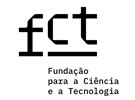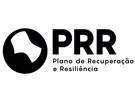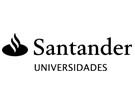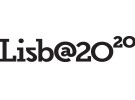



Publication in the Diário da República: Despacho 23/08/2011
6 ECTS; 1º Ano, 2º Semestre, 24,0 T + 24,0 PL + 12,0 OT , Cód. 30009.
Lecturer
(1) Docente Responsável
(2) Docente que lecciona
Prerequisites
None
Objectives
The main objectives are:
1 - To publicize the human visual perception system;
2 - Transmit the concepts associated with the formation process of digital images;
3 - The context of digital image processing (DIP) in the acquisition and analysis of medical images;
4 - Transmit the theoretical foundations of the DIP;
5 - To give students knowledge of the main techniques of acquisition and analysis of medical images;
6 - To give students the knowledge and ability to apply techniques for improving medical imaging;
Skills that pupils should acquire:
Understanding the human visual perception system and the digital images formation process;
Understand the theoretical foundations of the DIP;
Describe and apply techniques for improving medical imaging;
Mastering tools suitable for DIPs, namely the Matlab toolbox;
Identify, formulate and solve specific problems in medical imaging.
Program
Human Visual System (HVS) topics
Elements of HVS
Structure and image formation in the human eye;
General concepts
Digital image definition
Representation and image modeling
Enhancement, restoration and reconstruction;
Nature of biomedical images
Radiography
Computed Tomography
Magnetic Resonance
Nuclear Medical Image
Ultrasonic Image;
Digital image processing system (DIPS)
DIPS elements
Medical imaging acquisition;
Digital image fundamentals
Sampling and quantification
Basic relations between pixels
Geometry
Local and global operations
Histogram;
Artifacts removal
Artifact characterization
Filtering
Morphological operations;
Improved image
Manipulation of the histogram
Convolution with mask operators
Image Enhancement;
Detection of lines and edges
Detection of lines, contours and corners;
Region of interest detection
Thresholding and binarization
Targeting
Evaluation Methodology
The evaluation method consists of making a written test and design and implementation of an application for analysis and / or image processing, where both components have a weight rating of 50% of the final classification. To obtain approval for the course the student must achieve a final grade, averaged from the two components of assessment, equal to or greater than 9.5.
Bibliography
- Dhawan, A. (2011). Medical Image Analysis . (Vol. 1). (pp. 1---). USA: IEEE Press
- Gonzalez, R. e Woods, R. (2008). Digital Image Processing . (Vol. 1). (pp. 1---). USA: Prentice Hall
- Rangayan, R. (2005). Biomedical Image Analysis. (Vol. 1). (pp. 1---). New York: CRC Press
Teaching Method
This course is organized around theoretical sessions and practical sessions. In the theoretical sessions are taught the syllabus provided. The practical sessions are taught in the computer room where students will be able to develop medical image processing applications, using the Matlab software. Are also provided tutorial orientation sessions, using the IPT e-learning platform as a tool for disseminating information, answering questions, posting handouts, fact sheets, exercise, etc.
Software used in class
MATLAB - The Language of Technical Computing

















